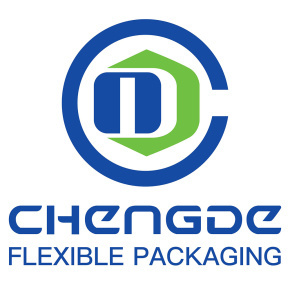Revolutionizing Sustainability: The Future of New Recyclable Tea Packaging
Release time:
2025-10-03
In recent years, the tea industry has witnessed a significant shift towards sustainability, driven by consumer demand for eco-friendly products. One of the most exciting developments in this movement is the emergence of new recyclable tea packaging. This innovative packaging not only meets the growing environmental concerns but also offers practical solutions to the challenges faced by traditional
In recent years, the tea industry has witnessed a significant shift towards sustainability, driven by consumer demand for eco-friendly products. One of the most exciting developments in this movement is the emergence of new recyclable tea packaging. This innovative packaging not only meets the growing environmental concerns but also offers practical solutions to the challenges faced by traditional packaging materials.
Recyclable tea packaging typically consists of materials that can be reprocessed and reused, minimizing waste and reducing the carbon footprint associated with production and disposal. The move away from non-recyclable plastics, which can take hundreds of years to decompose, is crucial in the fight against pollution and climate change. By choosing recyclable options, companies can significantly reduce their environmental impact and align themselves with the values of eco-conscious consumers.
One of the key benefits of new recyclable tea packaging is its versatility. Manufacturers are exploring a range of innovative materials, including biodegradable films and recycled paper products, ensuring that the packaging not only protects the integrity of the tea but also enhances its appeal on the shelf. This is particularly important in a competitive market, where aesthetics often play a significant role in consumer choice. Eye-catching designs combined with sustainable materials can attract more customers while promoting a brand's commitment to sustainability.
Moreover, recyclable tea packaging instills confidence in consumers. As awareness about environmental issues continues to rise, customers are increasingly seeking products that reflect their values. By utilizing recyclable materials, brands can communicate their dedication to sustainability, fostering loyalty and trust among their customer base. This shift not only benefits the environment but also presents an opportunity for businesses to differentiate themselves in a crowded market.
Education also plays a vital role in the success of recyclable tea packaging. Companies must effectively communicate to consumers how to properly recycle their packaging to maximize its environmental benefits. Clear labeling and informative resources can empower consumers to make informed decisions about disposal, further enhancing the impact of sustainable packaging initiatives.
In conclusion, the introduction of new recyclable tea packaging represents a significant step forward in the quest for sustainability within the tea industry. By embracing innovative materials and practices, companies can protect the environment while appealing to the growing demographic of eco-conscious consumers. This transformative approach not only enhances the overall consumer experience but also contributes to a more sustainable future for our planet. As the tea industry continues to evolve, the commitment to recyclable packaging will undoubtedly play a crucial role in shaping its future.
Recyclable tea packaging typically consists of materials that can be reprocessed and reused, minimizing waste and reducing the carbon footprint associated with production and disposal. The move away from non-recyclable plastics, which can take hundreds of years to decompose, is crucial in the fight against pollution and climate change. By choosing recyclable options, companies can significantly reduce their environmental impact and align themselves with the values of eco-conscious consumers.
One of the key benefits of new recyclable tea packaging is its versatility. Manufacturers are exploring a range of innovative materials, including biodegradable films and recycled paper products, ensuring that the packaging not only protects the integrity of the tea but also enhances its appeal on the shelf. This is particularly important in a competitive market, where aesthetics often play a significant role in consumer choice. Eye-catching designs combined with sustainable materials can attract more customers while promoting a brand's commitment to sustainability.
Moreover, recyclable tea packaging instills confidence in consumers. As awareness about environmental issues continues to rise, customers are increasingly seeking products that reflect their values. By utilizing recyclable materials, brands can communicate their dedication to sustainability, fostering loyalty and trust among their customer base. This shift not only benefits the environment but also presents an opportunity for businesses to differentiate themselves in a crowded market.
Education also plays a vital role in the success of recyclable tea packaging. Companies must effectively communicate to consumers how to properly recycle their packaging to maximize its environmental benefits. Clear labeling and informative resources can empower consumers to make informed decisions about disposal, further enhancing the impact of sustainable packaging initiatives.
In conclusion, the introduction of new recyclable tea packaging represents a significant step forward in the quest for sustainability within the tea industry. By embracing innovative materials and practices, companies can protect the environment while appealing to the growing demographic of eco-conscious consumers. This transformative approach not only enhances the overall consumer experience but also contributes to a more sustainable future for our planet. As the tea industry continues to evolve, the commitment to recyclable packaging will undoubtedly play a crucial role in shaping its future.
Related News

